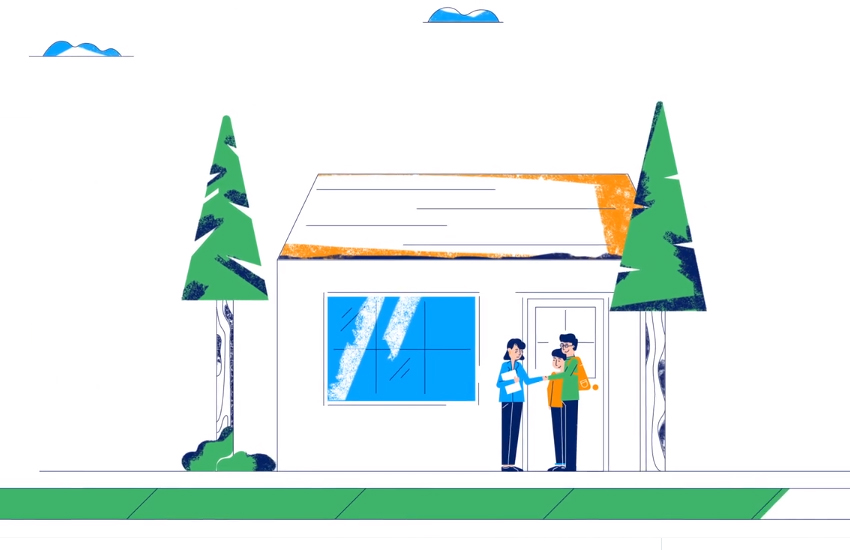BLOG

Customer journeys used to be relatively simple. Billboards, radio and television ads, and newspaper features built awareness over time; consumers made purchasing decisions based on brand familiarity or social proof.
Today's consumers see ten times as many ads as consumers saw in the 1970s. On average, they encounter more than 5,000 marketing messages every single day — and about 2 million 30-second ad clips every year.
That’s a lot of noise. It’s also why customer journey orchestration, and not mass marketing, delivers a greater return on investment in the modern marketplace.
Read on to find out how customer journeys have changed, and how AI-based CDPs are pushing personalization to the next level.
Customer Journeys Are More Complex than Ever
Customer journeys were much more linear in the 1990s. Big brands made TV commercials, which were expensive because both the number of channels and the number of broadcasting hours were limited. Smaller companies with thinner advertising budgets sent promotional materials to addresses on mailing lists. Personalization happened face to face in shops. Meanwhile, social media hadn’t even been invented yet.
Marketers went with a ‘spray and pray’ approach. They’d target large market segments at once, like these:
- All adults over the age of 21
- All the readers of a particular magazine or newspaper
- All the people living in a town
- All the people watching a particular programme on TV
Consumers usually saw new products in magazines, or on television. Brand reinforcement happened via billboards or newspaper ads. If we track a typical mid-1990s TV-buying customer journey via the AIDA (Attention, Interest, Desire, Action) model, it might look something like this:

In contrast, 21st-century customer journeys are fragmented — and they’re loaded with touchpoints. On the one hand, that granularity is a stumbling block because it obscures obvious paths into the sales funnel. On the other hand, complex journeys provide valuable opportunities to gather data.
In the 21st century, an advert for a TV seen at random on YouTube could prompt a ‘rabbit hole’ research session via TechCrunch or Which magazine, for example. Later, the consumer might see a banner ad or a social media ad, prompting them to add the television to an online shopping cart (in Amazon, or on the manufacturer’s website).
All done? Not so fast. The journey doesn’t end there — after all, more than 80% of shopping carts get abandoned before checkout. When consumers do abandon shopping carts, retailers have to coax them back into the sales funnel via clickable links, Google ads, well-placed video ads and a whole host of other marketing messages.
Multiple touchpoints and an increased number of steps to conversion make modern customer journeys look much busier — even if they’re reduced to AIDA:

A Customer Journey Evolution
In the past, brands promoted new products to large audiences via offline mass marketing. Customer journeys were pretty linear; marketing strategies were correspondingly simple.
Today’s customer journey happens both online and offline. The best part? More data.
Modern businesses ‘live’ in a landscape populated with data streams. They’re notified when former customers click on email links, and when leads convert. They know how many people visit their websites every month, and where those visitors come from — and how many of them bounce. They have the data to determine whether experimental video-driven ad campaigns work better than static banner ads.
Contemporary consumers expect a more complex journey, too. They expect personalization — and they expect it to be spot on.
To succeed in the modern marketplace, companies have to knit data sources together to create functional tapestries. Innumerable data threads make things complicated, though — and that’s where customer data platforms come in.
Now: Orchestrating the Customer Journey
According to Gartner, customer centricity is ‘the ability of people in an organization to understand customers' situations, perceptions, and expectations.’
Customer Data Platforms (CDPs) help organizations unify and interpret the data streams they already own. First-party data — owned data — flows into the CDP; consumer insights emerge.
CDPs are so much more than the ‘next stage of data harvesting’. That title probably belongs to the data management platform (DMP) — and CDPs run circles around DMPs from a functional perspective. CDPs facilitate intelligent, hyper-personalized consumer experiences. In effect, they can orchestrate customer journeys.
Going a step further, CDP-based journey orchestration platforms enable personalization at scale. Mature global brands use journey orchestration platforms to automate personalization for millions of unique consumers. Moving from mass marketing to custom orchestration can increase customer retention rates by 5%, and can increase profits up to 95%.
What is Intelligent Journey Orchestration?
Journey orchestration platforms unify data and enable accurate personalization to improve CX. When customers feel satisfied, they recommend brands to friends and family members. Everybody wins.
CDP evolution doesn’t end with journey orchestration: some companies integrate AI, too. At Relay42, the result is what we call Intelligent Journey Orchestration (IJO). Marketers can use the Relay42 platform to build responsive, dynamic customer journeys, which meet the consumers wherever they are in the sales funnel. In short, IJO facilitates 1:1 personalization on a mass scale.
Relay42’s IJO-integrated CDP can make AI-guided real-time adjustments to customer journeys. With marketing automation, known customers who abandon checkouts receive emails; if they don’t open those emails, they automatically see custom dynamic ads on partner websites. AI-guided Intelligent Journey Orchestration, on the other hand, can predict consumer behavior in advance. Website visitors who are likely to leave without purchasing might get a preemptive 10% off popup coupon, for instance, to encourage conversion.
Relay42’s IJO platform connects with online and offline data sources, including POS systems, websites, CRMs, and social media leads. Marketers can make Relay42 journeys as simple or as complicated as they like.
Drive Conversions with Relay42
‘Customer experience isn’t an expense. Managing customer experience bolsters your brand.’
– Stan Phelps
Relay42’s Intelligent Journey Orchestration platform represents a fusion of AI and CDP technology. You can use Relay42 to enhance consumer messaging, enable groundbreaking real-time personalization and drive conversions.
To find out more about Relay42, or to book a demo, get in touch with us today.


